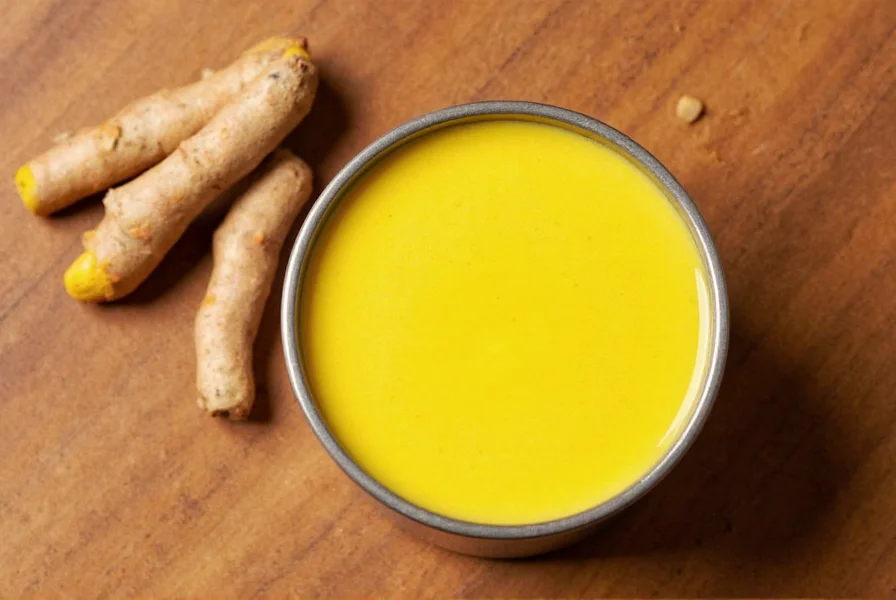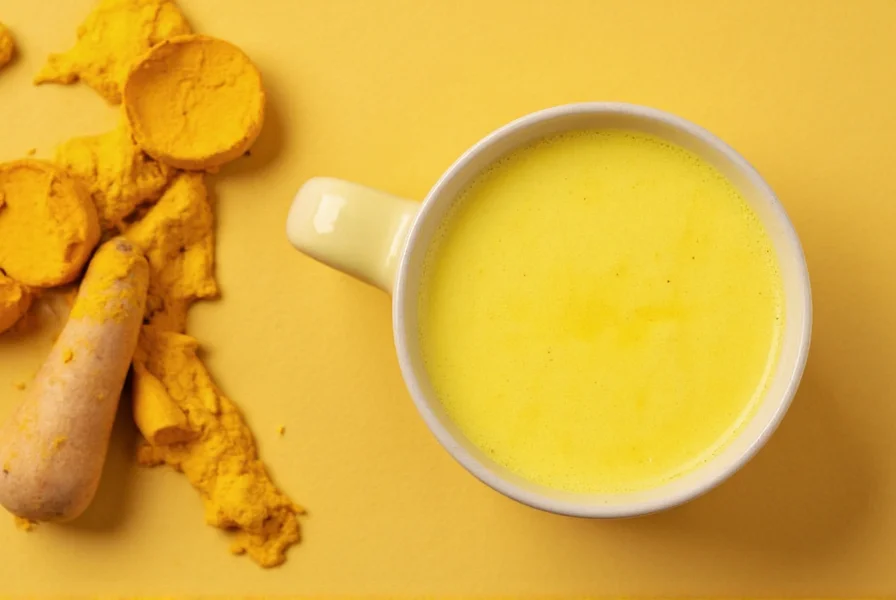For centuries, turmeric milk has been a staple in Ayurvedic medicine across South Asia. This vibrant golden beverage combines the earthy spice turmeric with warm milk, creating a soothing drink that's gained global popularity in wellness circles. While modern research supports some traditional claims about health benefits of turmeric in milk, it's essential to understand both its potential and limitations based on current scientific evidence.
The Science Behind Turmeric Milk Benefits
Curcumin, the active compound in turmeric, is responsible for most of the golden milk health benefits. Studies published in the Journal of Medicinal Food indicate curcumin has significant anti-inflammatory effects, potentially helping with conditions like arthritis. However, curcumin has low bioavailability on its own, which is why traditional preparations always include black pepper.
Piperine in black pepper increases curcumin absorption by up to 2,000%, according to research in Planta Medica. This explains why authentic golden milk recipe formulations always contain a pinch of black pepper. Without this crucial ingredient, your body absorbs minimal curcumin from the turmeric.

Evidence-Based Health Benefits
Based on current research, here's what turmeric milk may actually help with:
| Benefit | Scientific Support | Realistic Expectations |
|---|---|---|
| Mild anti-inflammatory effects | Strong (multiple studies) | May reduce joint discomfort, but not a replacement for medical treatment |
| Antioxidant properties | Strong | Supports overall cellular health |
| Sleep quality improvement | Moderate (anecdotal + some studies) | Warm milk has natural sleep-promoting properties; turmeric may enhance this effect |
| Digestive support | Moderate | May ease mild digestive discomfort |
What Turmeric Milk Can't Do
Despite popular claims, turmeric milk is not a miracle cure. Current research doesn't support claims that it can:
- Cure serious diseases like cancer or diabetes
- Lead to significant weight loss
- Replace medical treatments for chronic conditions
As the National Center for Complementary and Integrative Health states, while turmeric shows promise for certain conditions, more research is needed to confirm many health claims. This balanced perspective is crucial when discussing is turmeric milk good for you.
Authentic Turmeric Milk Recipe
Creating effective turmeric milk requires more than just mixing ingredients. Here's a science-backed preparation method that maximizes benefits:
- Heat 1 cup of milk (dairy or unsweetened almond/coconut) until hot but not boiling
- Add 1/2 teaspoon turmeric powder (or 1 inch fresh turmeric root, grated)
- Add 1/4 teaspoon black pepper (essential for absorption)
- Add 1/2 teaspoon coconut oil or ghee (fat helps absorb curcumin)
- Simmer gently for 5-10 minutes
- Add optional ingredients: cinnamon, ginger, or a small amount of honey

Best Practices for Consumption
For optimal results when making how to make turmeric milk part of your routine:
- Timing matters: Many find turmeric milk before bed supports better sleep due to the combination of warm milk and turmeric's potential calming effects
- Consistency is key: Benefits accumulate over time; aim for daily consumption rather than occasional use
- Avoid excessive amounts: More than 1-2 cups daily may cause digestive upset in some people
- Consider your milk choice: Full-fat dairy or coconut milk enhances curcumin absorption better than skim milk or non-fat alternatives
Potential Side Effects and Considerations
While generally safe, turmeric milk side effects can include:
- Staining of teeth or surfaces (turmeric is a powerful dye)
- Digestive discomfort in sensitive individuals
- Potential interactions with blood thinners (consult your doctor)
- May cause acid reflux in some people when consumed on empty stomach
Those with gallbladder issues should consult a healthcare provider before regular consumption. Pregnant women should limit intake to culinary amounts rather than therapeutic doses.
When to Expect Results
Understanding realistic timelines for turmeric milk benefits is crucial. Most people notice subtle effects after 2-4 weeks of consistent daily consumption. The best time to drink turmeric milk varies by goal:
- For sleep support: 30-60 minutes before bedtime
- For inflammation: Morning or evening, consistently
- For digestive support: 20 minutes before meals
Remember that individual responses vary significantly based on metabolism, health status, and preparation method. The quality of your turmeric significantly impacts results—choose organic, tested for purity when possible.











 浙公网安备
33010002000092号
浙公网安备
33010002000092号 浙B2-20120091-4
浙B2-20120091-4